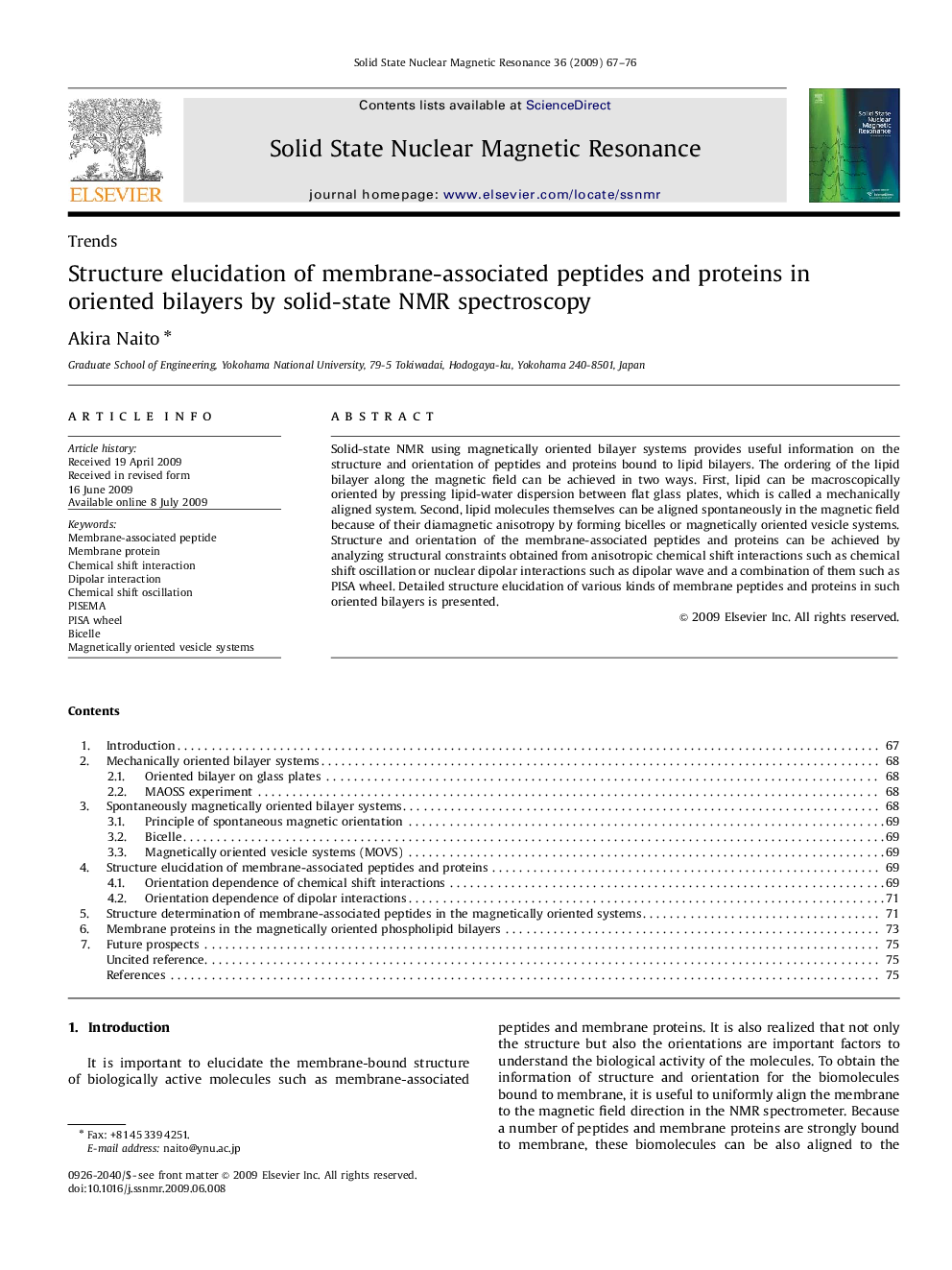| Article ID | Journal | Published Year | Pages | File Type |
|---|---|---|---|---|
| 5420837 | Solid State Nuclear Magnetic Resonance | 2009 | 10 Pages |
Abstract
Solid-state NMR using magnetically oriented bilayer systems provides useful information on the structure and orientation of peptides and proteins bound to lipid bilayers. The ordering of the lipid bilayer along the magnetic field can be achieved in two ways. First, lipid can be macroscopically oriented by pressing lipid-water dispersion between flat glass plates, which is called a mechanically aligned system. Second, lipid molecules themselves can be aligned spontaneously in the magnetic field because of their diamagnetic anisotropy by forming bicelles or magnetically oriented vesicle systems. Structure and orientation of the membrane-associated peptides and proteins can be achieved by analyzing structural constraints obtained from anisotropic chemical shift interactions such as chemical shift oscillation or nuclear dipolar interactions such as dipolar wave and a combination of them such as PISA wheel. Detailed structure elucidation of various kinds of membrane peptides and proteins in such oriented bilayers is presented.
Related Topics
Physical Sciences and Engineering
Chemistry
Physical and Theoretical Chemistry
Authors
Akira Naito,
